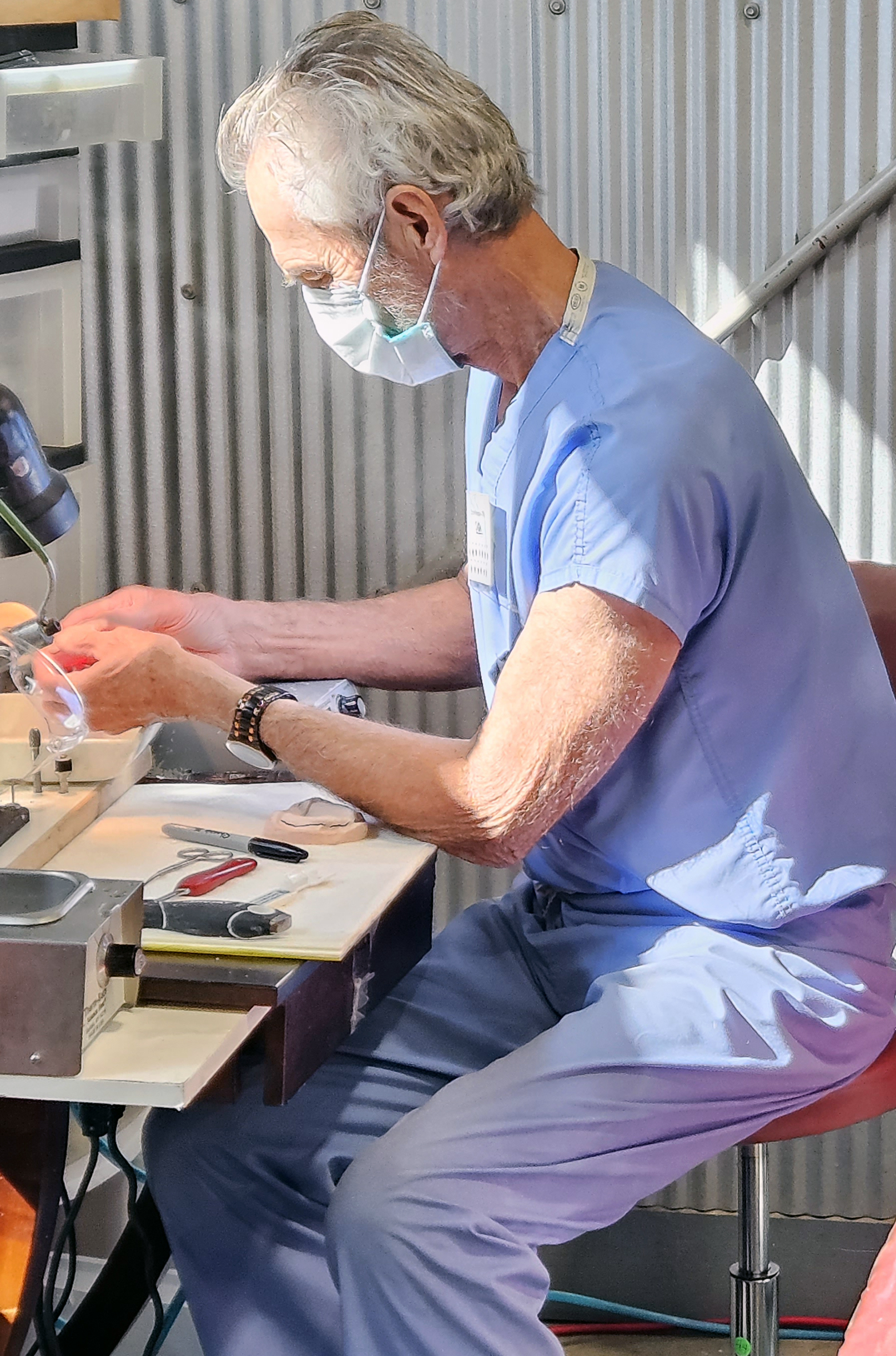From the 2025 Spring Journal of the Colorado Dental Association
By Darrel Kneupper, D.D.S.
Partial denture care, while perhaps relatively “low-tech,” can be challenging and frustrating for patients as well as for their well-meaning dental providers. While much has been said and written about concepts of cast

Dr. Darrel Kneupper
metal removable partial denture (RPD) design, theory and recommended protocols for predictable clinical success, there seems to be room for improvement in managing resin-based removable partial dentures.
Resin-based removable partial dentures can be a good replacement for anterior teeth to enhance self-image and social confidence, and to improve employability. They are especially relevant for providing prosthodontic solutions at short-term volunteer events like the Colorado Mission of Mercy (COMOM). The great support team of talented lab techs skilled in denture fabrication make this formidable task possible. The dentists are involved with assessing the needs and, along with their dental assistants, recording high-quality dental impressions which are essential to making this monumental clinical effort a predictable reality. We also found that inserts are a lot easier if the attending dentist takes a moment to assess each case to see if some tooth re-contouring is needed prior to recording impressions needed for prosthesis fabrication.
Appropriate guide plane management is a basic prosthodontic tenet that, unfortunately, seems to be often overlooked. Since the proximal natural anatomy of most teeth have crests of contours that are at or close to the occlusal or incisal regions, paths of insertion and removal can be made much more favorable if these surfaces are properly enhanced. Creating parallel or slightly divergent tooth surfaces provides close-fitting internal denture surfaces that minimize food impaction and promote frictional drag to enhance internal retention. This takes only a moment to accomplish and requires far less time than having to deal patiently with identifying and eliminating excess tightness at denture insert or having a prosthesis that is too loose as a result of excessive model relief in critical fit areas.
While resin-based partials usually cannot rely on conventional occlusal rests to serve as vertical stops as they usually break off quickly, some occlusal stop effect can be developed by creating divergent proximal guide planes or by accentuating cingulum anatomy when possible. However, conventional occlusal rest-deep dimpling seems to work with much more break-resistant, vinyl-based “flex” partials to reduce edentulous area atrophy gum stripping, often seen with totally ridge-borne partial denture services. In those cases where posterior teeth are lingually inclined, reducing the lingual crest of contour enhances the fit of the RPD against the teeth and minimizes the need for base relief at the delivery appointment.
While most teeth seem to have labial anatomy with sufficient undercuts for effective clasping, some labial surface enameloplasty may be needed to reduce the height of contour to facilitate lowering properly adapted wrought wire clasps for optimum cosmetics and minimal food impaction. For abutment teeth with little to no natural retention, creating some strategic surface dimpling at proximal line angles can be helpful to ensure circumferential clasps are engaged at only their terminals to secure the partial when chewing sticky foods and to avoid embarrassing denture drop or annoying lift off. In those cases where that is not feasible, looking to a ball-clasp design to engage interproximal gingival embrasures may be an attractive alternative. If there is a tight-bite with occlusal interferences, developing a trough large enough to tuck the wire clasp over interproximally is necessary.
Most of these quick and easy tooth modifications can be accomplished without creating significant patient discomfort. Effective impressions, professional lab support, and taking the time to evaluate the contours of remaining key teeth will make a real difference in the quality of prosthodontic care you provide. It also improves the level of satisfaction you, your dental team, and your patient experience.

